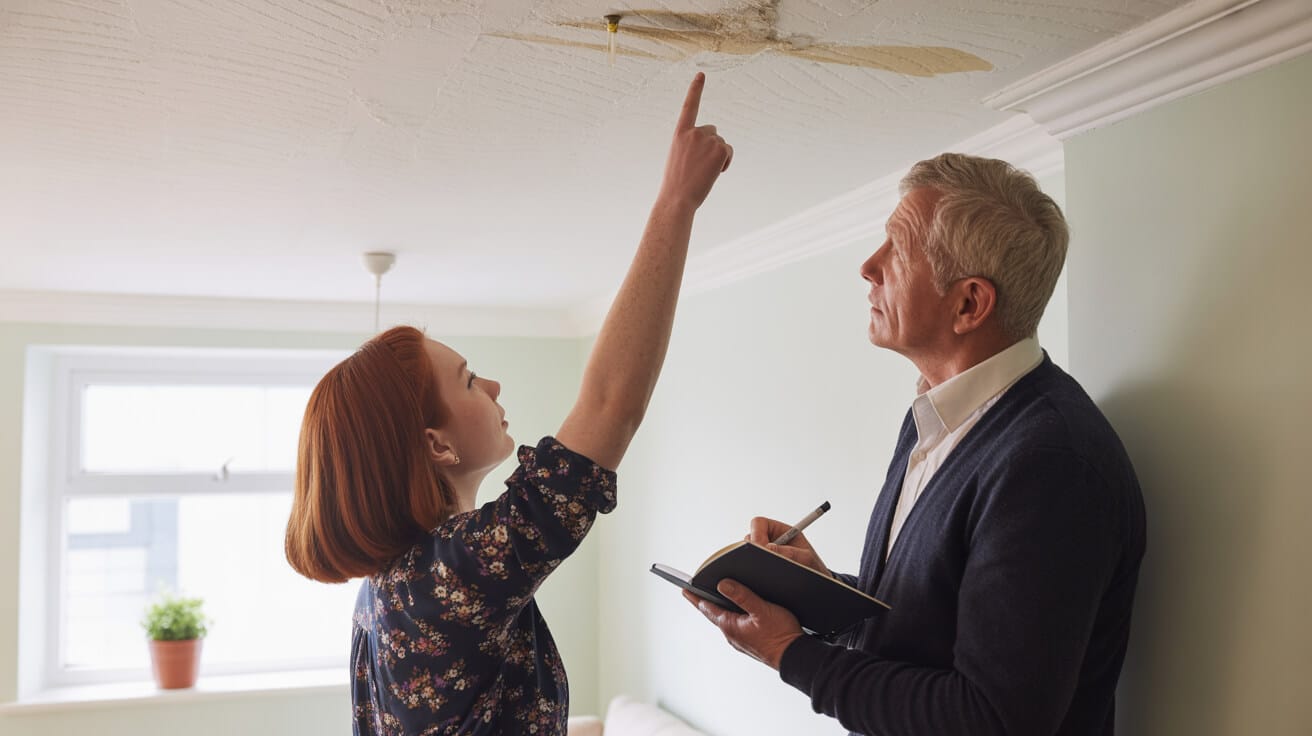 Victorian Plumbing Modern Solutions for Period Properties
Victorian Plumbing Modern Solutions for Period Properties
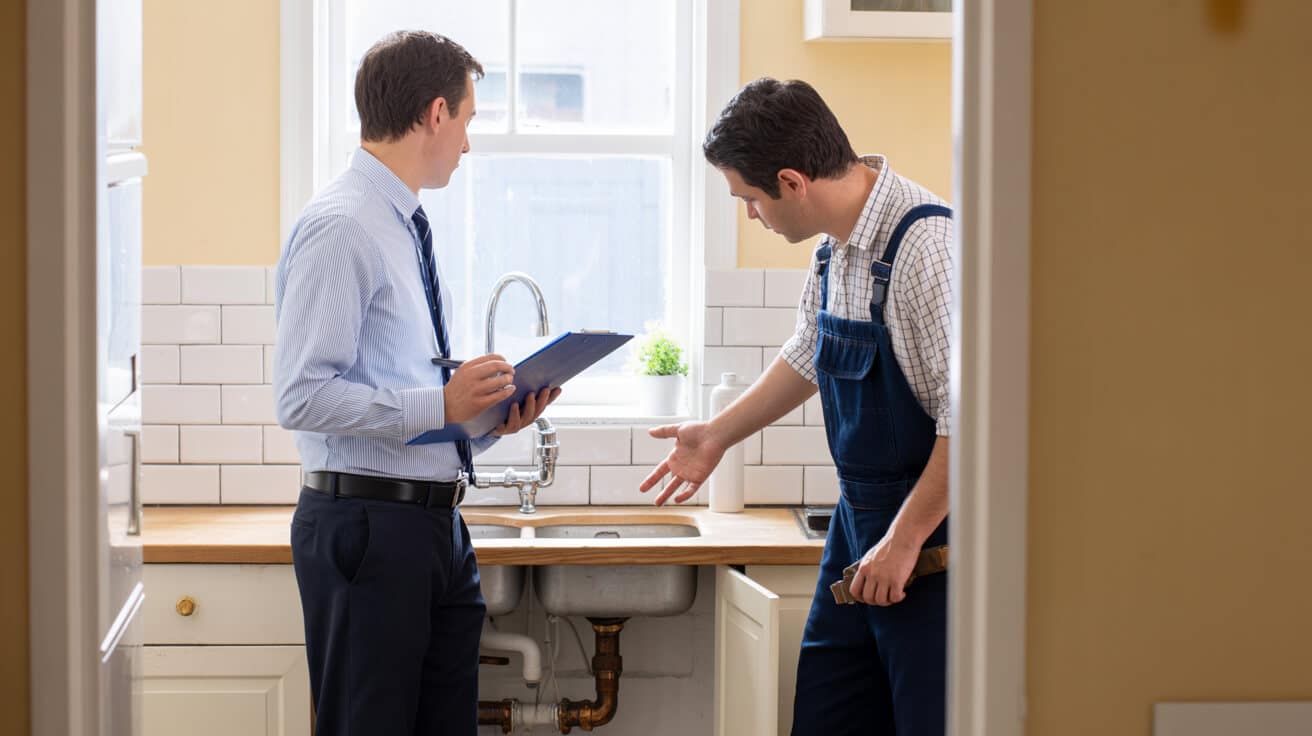
Can a Victorian Property Keep Its Character Without Sacrificing Safe, Legal Plumbing?
Step inside a Victorian home and you’re stepping into British history—sash windows, ornate cornices, and that unmistakable period charm that sets these properties apart from anything built today. But beneath those show-stopping features, most Victorian buildings hide outdated plumbing that simply wasn’t designed for modern life—or modern safety standards. If you own, manage, or let one of these properties, you’re forced to answer a cold, practical question: can you really keep the character without risking insurance, legal compliance, or your family’s health?
The upgrades that matter most are the ones no one ever sees—silent plumbing, safe water, and documentation that stands up in front of any surveyor or insurer.
Many believe that updating means tearing out history, but the real pros work invisibly behind the scenes. Advanced, WRAS-approved techniques allow for concealed copper, plastic, and smart routing that safeguard your home’s appeal while protecting its future. The right upgrade isn’t a compromise—it’s taking responsibility as an owner or steward for the next generation. In today’s market, fully compliant plumbing isn’t just “nice to have”—it’s a legal must, and it’s the fastest way to add value, security, and peace of mind.
If your building’s original charm is worth fighting for, so is making sure what runs beneath it is legal, safe, and future-proof.
What You Risk By Doing Nothing
Neglecting your old plumbing isn’t romantic—it’s risky. Nearly every denied insurance payout or property sale delay in the period sector comes down to non-compliance or missing paperwork on the plumbing. The message from insurers and the law is clear: there’s no patience left for guesswork or “patchwork” behind those beautiful tile floors and timber frames.
What Hidden Plumbing Problems Threaten Victorian Homes Today?
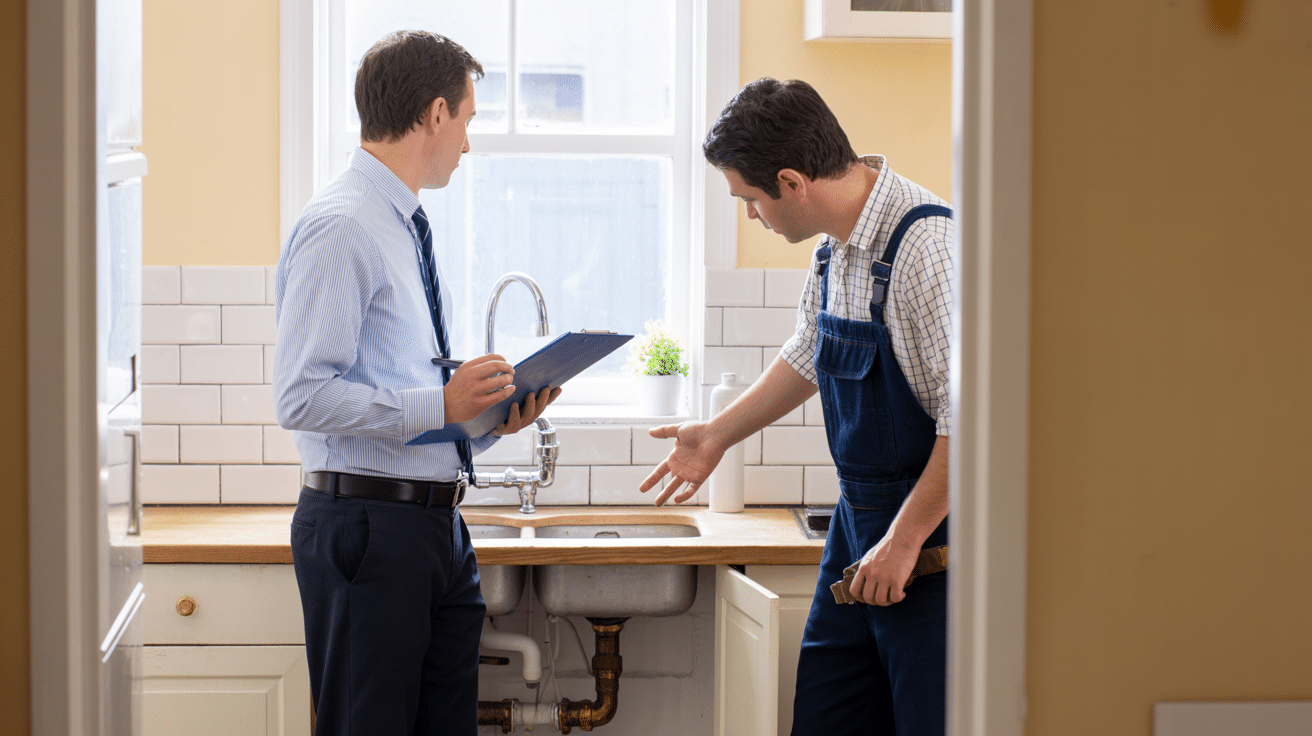
Owning or managing a period home often means inheriting a time capsule of outdated plumbing—lead pipes, galvanised steel, and haphazard repairs, sometimes pieced together with whatever was available at the time. Unless you’ve stripped every floor and chased every wall, there’s a strong chance these silent hazards are still there, quietly inviting risk to water safety, legal compliance, and property value.
It’s never just the visible pipes: most threats are buried beneath floors or behind walls—often missed for decades.
Why These Old Materials Spell Trouble
- Lead Pipework: It’s a neurotoxin by today’s standards, especially dangerous for children and pregnant women (NHS Scotland). It still lurks unseen in older properties, and even small runs can contaminate supply.
- Galvanised Steel/Old Iron: Prone to corrosion and blockages, these pipes create pressure drops and can let rust into drinking water. They’re a red flag for mortgage and insurance underwriters *(WaterRegs UK)*.
- Patchwork Upgrades: Many homes contain a patchwork of modern and legacy plumbing. This mix can cause sudden pressure changes, leaks, and is almost always non-compliant.
Invisible Risks That Derail Sales and Tenancies
You can’t fix what you can’t see. Short of ripping everything out, only a skilled trace—using endoscopic cameras and thermal imaging—will reveal the real state of your plumbing. Even a small section of legacy pipe can stall a house sale, block a tenancy, or void insurance. UK water suppliers now offer schemes for free lead replacement, but you’ll need full documentation and a system map to qualify, making expert tracing more urgent than ever.
- Fact: Any property with remaining lead or iron is a compliance risk, even if most pipes have been switched to copper or plastic.
- Fact: Landlords face routine council checks and improvement notices if any legacy materials are present or paperwork is missing.
Compliance starts with knowing exactly what’s hidden—and ends with certified proof when it’s removed or replaced.
How Do Modern Upgrades Safeguard Period Details in Victorian Properties?
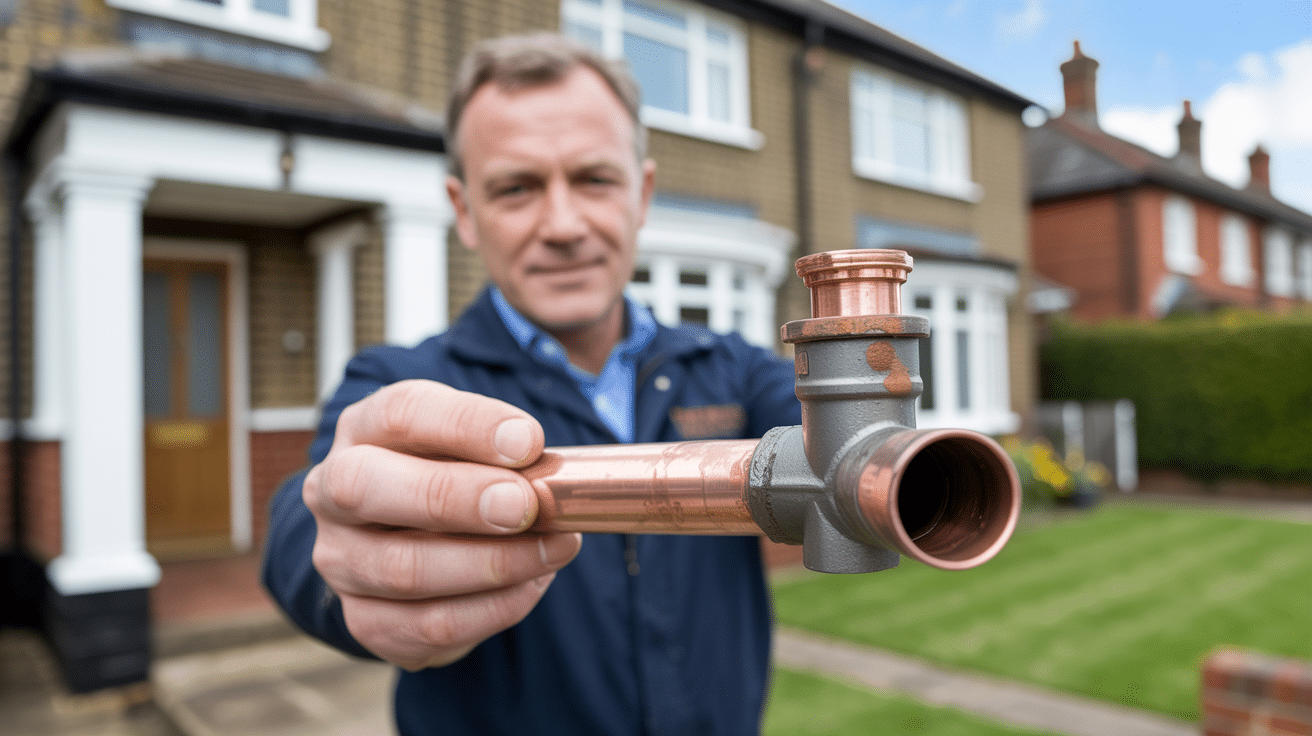
The heartburn most period owners and agents feel is justified—no one wants heritage details butchered in the name of efficiency. But top-tier, WRAS-approved plumbers know how to walk the tightrope: making upgrades that are invisible to the eye but transformative in performance and safety.
A great upgrade is one where you can’t find the changes—except on the compliance certificate.
The Skill (and Respect) Behind Modern Heritage Plumbing
- System Mapping First: Non-invasive scans (thermal cameras, inspection scopes) map every run before a single board is lifted or cornice disturbed. Modern upgrades begin with a plan to preserve.
- Photo Documentation: From first entry to final handoff, every stage is logged photographically—building a record for insurance, resale, and proof to future tenants or buyers.
- Agreed Route Plans: The best teams walk you through options to keep original features, advising on lifting boards only where absolutely necessary—and restoring every detail as found.
- Invisible Pipework: Copper and WRAS-approved plastics are routed behind skirting or within voids; only the last few inches ever show, often colour-matched or supplied in period-appropriate finishes.
- Traceable, Maintainable Fixes: Every part, every new run is catalogued. No anonymous fixes, no future confusion for the next owner or engineer.
What You Keep—and What You Gain
With the right process, you keep your Victorian soul and gain a property ready for modern living. You don’t have to live in the past to enjoy style—but you can’t ignore the future and hope old water and waste are “good enough.”
Why Do Victorian-Style Bathroom and Kitchen Fixtures Fail Without the Right Plumbing Backbone?
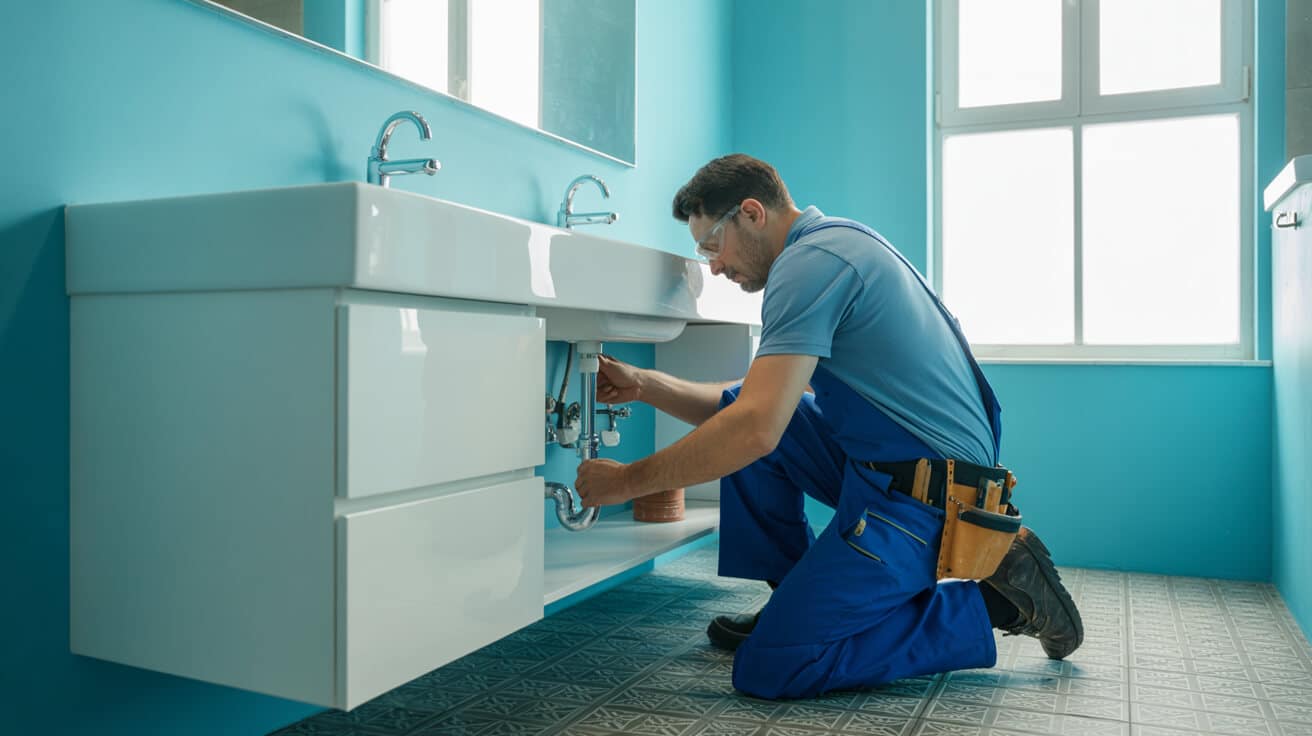
You can spend a fortune on a period-inspired basin, claw-foot tub, or solid brass taps—and still find your fancy new bathroom delivers little more than cold trickles and sluggish drains. The reason? Modern fixtures need modern supply and waste systems—the original Victorian infrastructure simply can’t keep up.
Beauty at the basin is wasted if what’s underneath can’t deliver.
The Most Common Modernisation Failures
- Low Water Pressure: Gravity-fed cold water tanks (≤1 bar) can’t run today’s showers, mixers, or even washer-friendly hot/cold taps. No amount of artisanal brass or vintage shapes will create flow when the system sagged decades ago.
- Blocked or Smelly Wastes: Old iron or narrow-bore plastics weren’t built for the flow rates demanded by dishwashers, high-output baths, or multi-jet showers. Unvented wastes can cause slow drainage, gurgling, or even back-venting of smells and water.
- Partial Upgrades: Mixing the new with the old—patches of copper or plastic with legacy steel, flexible hoses with crumbling stopcocks—causes inconsistent pressure and potential contamination (and again, fails compliance checks).
Why System Assessments Beat “Like-for-Like” Swaps
A full, system-level assessment by a heritage-minded plumber ensures every fixture will deliver—no more surprises after the dust-sheet comes off. Upgrading is more than replacing what’s visible; it’s future-proofing comfort for every occupant while locking in legal and market value. Without this diligence, even a showpiece kitchen or wet room can quickly be out of order or off the letting market.
If you want period style to last, demand modern substance behind the scenes. Most failures start with the pipes, not the fitting.
What Documentation and Certification Secure Compliance (and Market Value) After Upgrading Victorian Plumbing?

Ask any insurer, letting agent, or municipal officer—the first thing they want is the paper trail. Work means nothing unless it’s both visible (on camera) and certified (on paper). Compliance isn’t just about pipes—it’s about records that travel with the property for the next buyer, tenant, and survey.
The highest value upgrades are the best documented. Future claims depend on more than what’s in the wall.
Your “Compliance Pack”—What’s Essential
- System Tracing Reports: Maps and marks every change from lead or steel to copper/plastic, showing hazardous material removal.
- WRAS/Benchmark Documentation: Every new pipe and fixture is logged by part number and recorded on a recognised scheme (essential for major insurers and mortgage lenders).
- Photo Logs for All Works: Before, during, and after—creating forensic-level proof for buyer/surveyor/insurer.
- Ongoing Logbook Maintenance: Properties with Benchmark or WaterSafe files show council and authority that work is kept up to date.
- Electronic Copybackups: Digital files mean you can defend value, compliance, and safety at any time—increasingly essential for fast sales and tenancies.
Paperwork is more than proof; it’s the lifeline for insurability, tenancy readiness, and market premium.
What Are The Real Dangers and Disguised Costs of Cutting Corners on Compliance and Documentation?
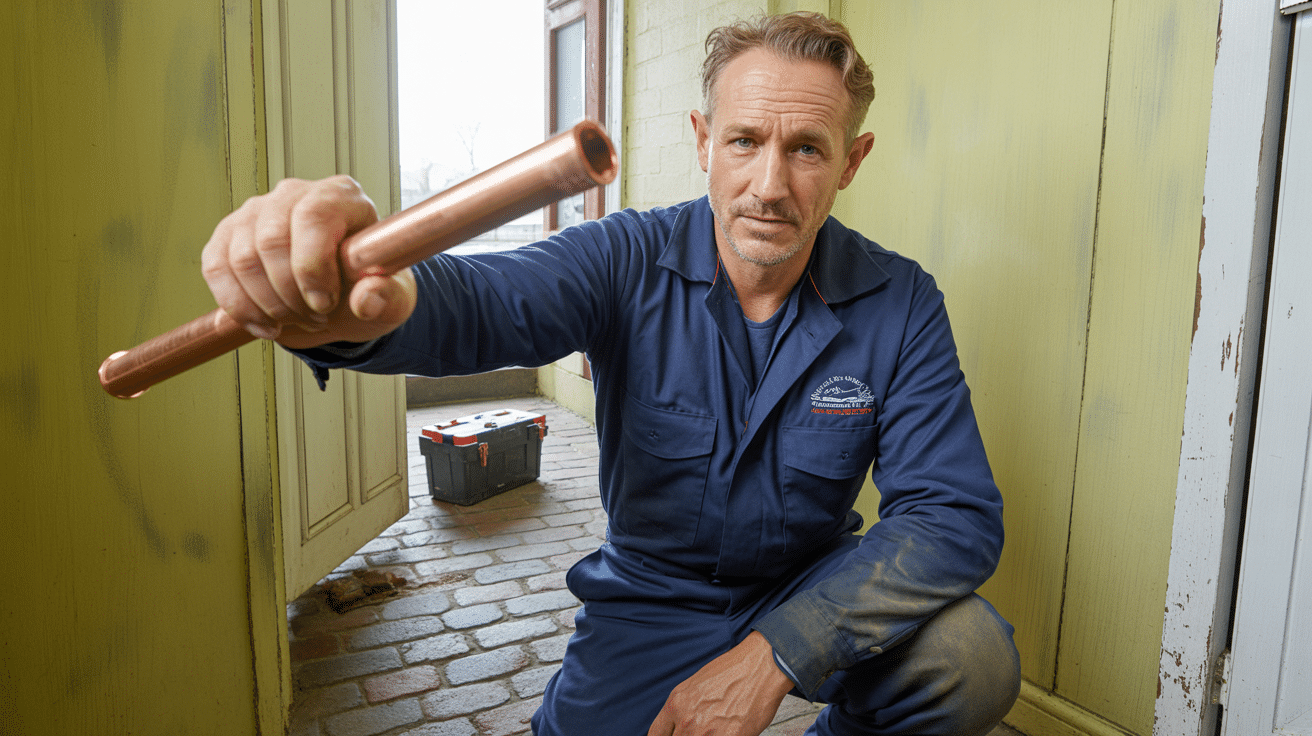
It’s tempting—especially with tight timelines or when prepping a property for let or sale—to “just do what’s visible” and save a few pounds. That shortcut is one of the costliest myths in period property ownership. Untouched legacy pipes, undocumented repairs, or partial upgrades might hide for a while, but always reappear—often at the worst time.
A nice finish means nothing if the next inspection, claim, or sale uncovers what you left behind. The hidden cost of shortcuts is ten times the ‘saving’.
What Corner-Cutting Actually Costs You
- Policy Refusal or Claims Dismissal: If trouble strikes, and the loss traces to old pipes or absent certification, insurers can and do refuse payout. Banks and building societies are just as vigilant.
- Lost Time (and Value): Surveys for let, sale, or refinance now demand full documentation. Missing or incomplete paperwork often means redoing compliant work after the fact—nightmare delays, cost hikes, and potentially lost deals.
- Heritage Damage: Rushed corrective works after a failed inspection are more likely to damage floors, tiles, or irreparably harm original details once carefully preserved.
The Only “Shortcut” Is Doing It Right
Comprehensive, certified upgrades are faster in the long run, cheaper than retroactive fixes, and emotionally less devastating for owners and managers. You preserve value, historic appeal, and peace of mind—all while reducing risk for tenants, buyers, and your own reputation.
What Does a Heritage-Smart Victorian Upgrade Involve, Step by Step?
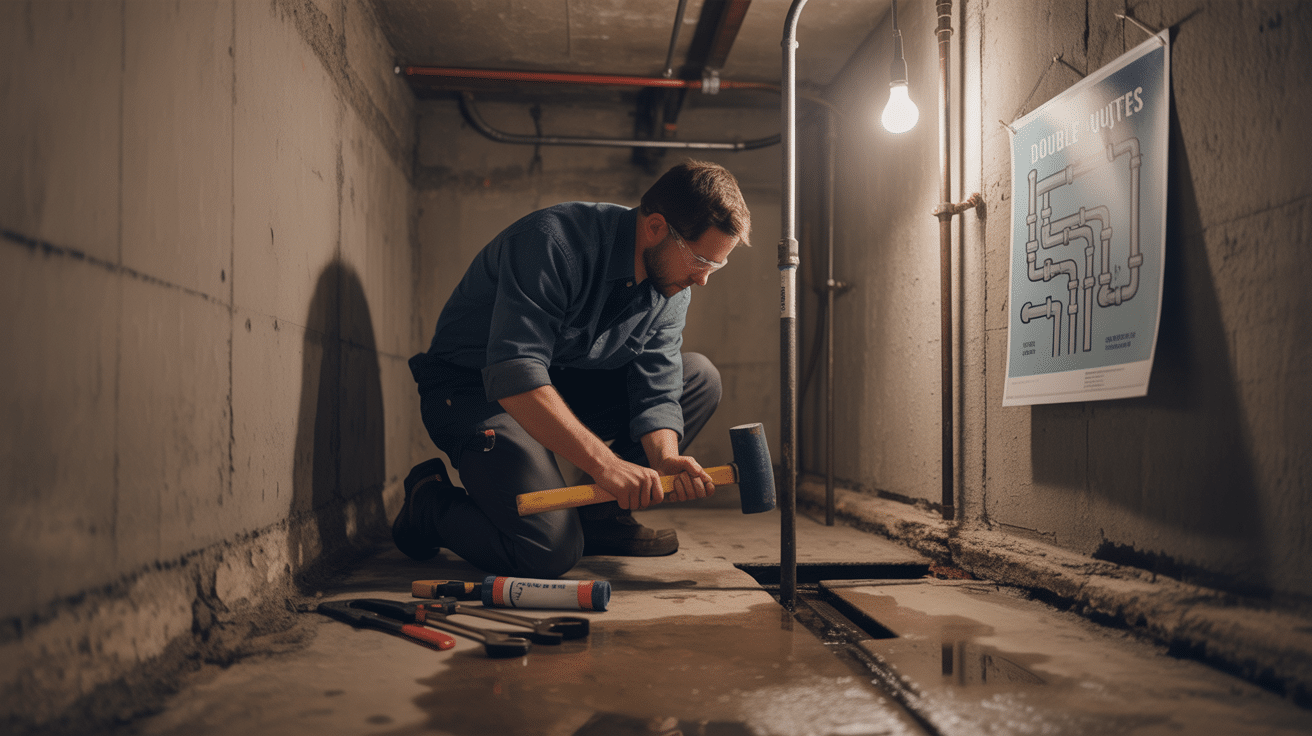
No two Victorian homes are the same, but the path to safe, legal, and resilient plumbing follows a precise, well-documented plan. Think of it as a “clinic” for your building’s internal health:
- Survey and Trace: Inspect every visible and hidden run using non-invasive tech (cameras, sensors, thermal imagers). Identify all high-risk legacy pipes.
- Risk Assessment and Mapping: Flag urgent hazards (lead, steel, unvented wastes). Prioritise for immediate action and phase less urgent upgrades.
- Open the Paper Trail: Log every intervention in a WRAS/benchmark file, cross-referencing parts, photos, and certificates.
- Minimally Invasive Upgrades: Use digital plans to conceal pipework, preserve details, and restore finishes perfectly. No cuts without permissions.
- Full System Upgrade: Remove all risky legacy elements—run new WRAS-approved copper or plastic all the way to property boundaries.
- Stepwise Client Sign-Off: At every milestone, demonstrate what’s new, walk the property together, and log every stage photographically.
- Aftercare and Certification: Deliver all paperwork, handover instructions, and maintenance tips, setting future owners/tenants up for compliance.
Do the job once, properly certified, and your property is future-proofed forever—ready for sale, new letting, or clean insurance renewal.
How Does Plumbers 4U Deliver Modern Plumbing That Protects and Celebrates Your Victorian Home?
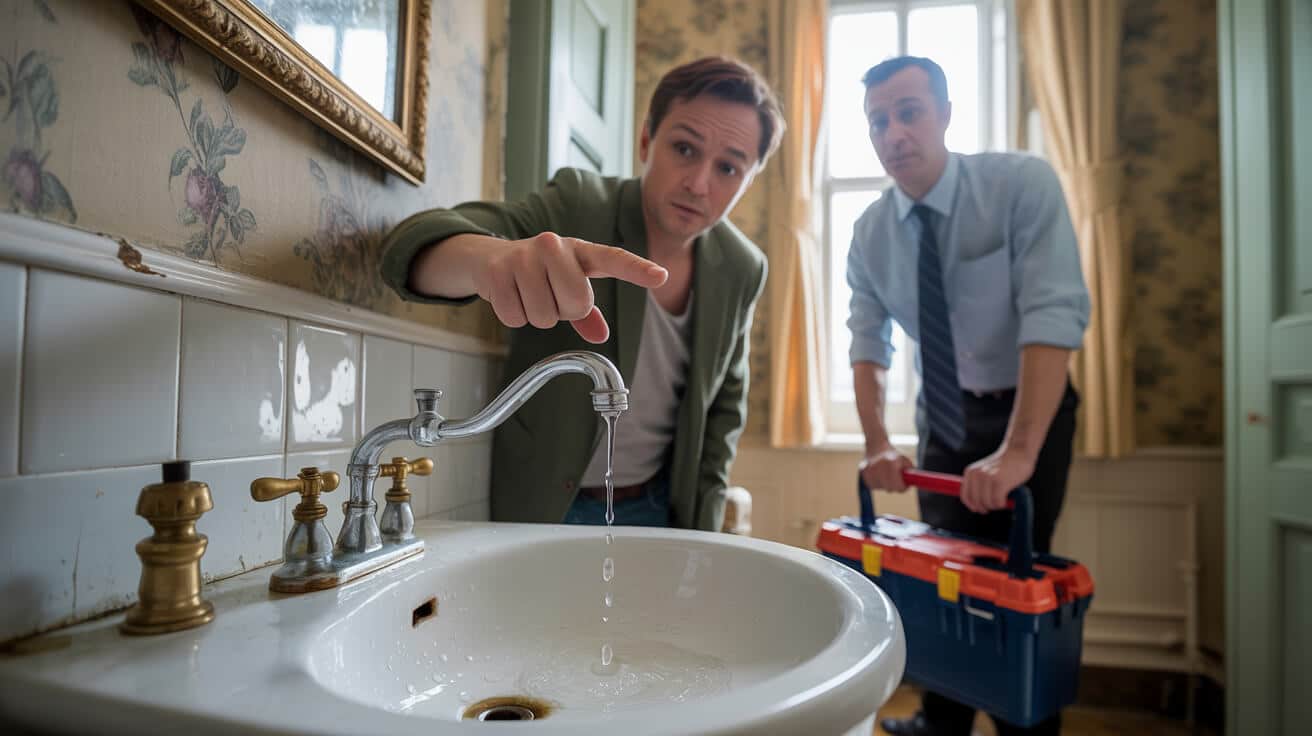
For owners who care about both the past and the future, Plumbers 4U offers a heritage upgrade service that puts legal compliance, documentation, and respect for character at the heart of every project. We specialise in period homes and commercial Victorian buildings, blending deep technical know-how with a passion for British history.
What you get with Plumbers 4U:
- Heritage-Aware Audit: A full trace of your entire system, pinpointing invisible threats and mapping out risk areas.
- Transparent Quoting, No Surprises: All works are priced up front, with line-item scope and material specs, so you avoid hidden extras or last-minute compliance fail charges.
- WRAS & Benchmark-Based Compliance: Every upgrade is WRAS and G3 certified; we maintain digital and physical logbooks so your investment is always protected.
- Minimal Intrusion, Maximum Respect: Period details, from fancy coving to hardwood floors, are mapped and protected. The goal: safety upgrades you never even notice—except in your water quality and peace of mind.
- Ongoing Support: User guides, annual reminders for compliance checks, digital backups, and a real human engineer always on the end of the phone if you—or your tenant—have further questions.
Every Victorian home deserves to be both historic and safe. We protect your past—and set you up for the next hundred years.
If you’re preparing to let, refurbish, insure, or sell a period property, our certified approach is the only route to hassle-free value and tenant satisfaction. No trade-offs. No regrets.
Book Your Heritage Plumbing Audit With Plumbers 4U Today
Your property’s value, comfort, and legal standing are all on the line—and the cost of waiting or “half jobs” always reappears, with interest. Plumbers 4U makes it simple: schedule a full system audit, get a clear, certified upgrade plan, and rest easy for every future sale, tenancy, or insurance renewal.
Don’t leave your building’s future to chance or untracked legacy pipes. One decision now lets you enjoy period beauty with worry-free ownership for decades to come. It’s not just about compliance—it’s about caring for what makes your Victorian property unique, and making sure that storey continues.
Communicate with us today to secure your property’s future, upgrade with confidence, and keep every bit of the character you fell in love with—now safer, more valuable, and ready for anything.
Frequently Asked Questions
What subtle plumbing threats could escape notice in Victorian and period homes?
Plumbing flaws in Victorian and period properties often evade even a sharp-eyed owner—their dangers aren’t usually creaking pipes or visible puddles, but concealed weaknesses that develop over generations. Factors like hidden lead supply lines, corroded galvanised steel, patchwork upgrades, and ancient clay drains can quietly undermine water safety and structure beneath original floors or elegant plasterwork. Period homes can harbour supply pipes spliced together from old and new metals, only revealing their risk when the water runs discoloured or pressure dips unexpectedly.
Metal fatigue, hidden leaks in boxed-in chases, or slow seepage beneath decorative timber will not show until damp patches, musty odours, or a rising water bill force an investigation. Routine redecorations rarely lift enough timbers or skirtings to reveal the true storey, so many legacy risks linger unseen for years. Far from harmless, these silent faults can fuel black mould behind walls, introduce lead to drinking water, and undermine insurance or asset value if left unresolved.
The greatest weakness in a period property is often the one even your surveyor can’t see until it’s grown roots deep into your flooring.
How can you spot the lurking hazards in older plumbing?
- Look out for persistent low water pressure or metallic-tasting water, especially in homes predating the 1970s.
- Note unexplained damp patches, patches of black staining, or odd pipework routing in cellars and below baths.
- Pay attention to recurring blockages—root ingress or collapsing clay drains rarely reveal themselves until an emergency.
- Have a WRAS-accredited plumber inspect with modern tools like CCTV pipe cameras and moisture sensors.
- Get any legacy material mapped, documented, and photographed—critical for future repairs or insurance claims.
How can historic charm and legal compliance both be preserved during Victorian plumbing upgrades?
Striking harmony between period aesthetics and up-to-date water safety takes careful planning and the right technical understanding. Victorian-era layouts were not designed for today’s water pressures or modern heating sources, so upgrades must be layered—never rushed—if you want to retain heritage looks without building up future risk. This means mapping the entire existing network and adopting a “least-visible intervention” approach: restoring or upgrading only after meticulously recording feature positions and condition.
For visible supplies, use pre-aged copper or powder-coated iron and period-accurate brackets, allowing exposed lengths to blend convincingly with heritage finishes. Under floors and in boxed skirtings, WRAS-certified PEX pipe offers modern reliability, while blending valves and isolators can be discreetly boxed behind cupboards or accessible panels. Always choose WRAS-listed heritage tapware, high-level cisterns, and basin sets. Every system modification should be photo-documented, with clear notation of any original feature lifted and reinstated—a “care manual” for future works.
True Victorian upgrades happen below the surface—good plumbing vanishes into the bones of the house, leaving nothing but reassurance and charm behind.
Steps to a compliant, period-sensitive plumbing upgrade:
- Survey and document every feature; protect floors, panelling, and decorative elements.
- Prioritise like-for-like materials for exposed sections—aged copper, iron, or sympathetic fittings.
- Keep advanced valves, TMVs, and controls hidden behind reversible, access-friendly joinery.
- Provide a care manual and certificates, ensuring future owners or insurers can see the quality.
- Choose a plumber experienced with listed properties and able to work within Conservation rules.
What are the real legal and health issues tied to lead and galvanised pipes in older homes?
Lead pipes aren’t simply “outdated”—they’re actively harmful, and UK water regulations prohibit their use in active supply. Even a short length left between the stopcock and kitchen tap can leach neurotoxins into your water, putting children and anyone pregnant at particular risk. Galvanised steel, though once fashionable as an upgrade, corrodes internally over decades, shedding metals and reducing flow—making water cloudy and tainted. The Water Supply (Water Fittings) Regulations 1999 outlaws all new or ongoing use; even “hidden” pipes in a Victorian home can derail insurance, mortgages, or sales once discovered (Water Regs Advisory Scheme, 2024).
A council can order replacement or fine landlords for failing to remove dangerous pipes. If your property is let, the Housing Health and Safety Rating System (HHSRS) applies—and non-removal can jeopardise the tenancy. For home sales or insurance renewals, expect demands to certify that all active supply lines are lead- and steel-free, especially in properties predating the 1970s.
Heritage status never trumps water safety law—any legacy metal putting safety at risk must be replaced, not just worked around.
How should owners respond if legacy pipes are found?
- Commission a WaterSafe or WRAS-accredited engineer to survey the full run—documenting with photos and samples.
- Replace all legacy supply pipes with WRAS-approved copper or PEX, from entry to outlet.
- Keep digital records, before/after photos, and benchmark certificates for compliance.
- Notify insurers and mortgage providers once works are complete to confirm risk is removed.
- Schedule annual testing and inspection as part of ongoing legal and landlord duties.
Which modern plumbing systems best combine efficiency with Victorian authenticity?
Retrofitting a period home demands more than off-the-shelf parts—success lies in blending cutting-edge performance with surfaces loyal to the era. Modern pre-aged copper (for visible supplies) and powder-coated cast iron (for drains) achieve both function and heritage fidelity. Hidden runs use WRAS-certified PEX: safer for high pressure and easier to pull through difficult voids without damaging historic fabric. “Heritage” bathroom brands now offer WRAS-tested taps, showers, and flush systems that look indistinguishable from Victorian originals while boasting current safety and efficiency features.
Discreet controls like thermostatic mixing valves, smart zone isolators, and under-floor leak alarm systems can be built-in where needed for compliance, yet hidden behind skirting or cabinetry for a seamless finish. Photo-log every upgrade and maintain compliance paperwork for ongoing insurance and resale protection.
The best plumbing in a classic home is the kind your visitors never notice—silent, smooth, and ghosts in the walls until you need them.
Table: Authentic upgrades for performance and compliance
| Visible Feature | Modern Option (Victorian Compatible) | Compliance Value |
|---|---|---|
| Exposed pipes | Pre-aged copper, iron, period clips | WRAS-approved, safe |
| Drains | Powder-coated cast iron | Part H, silent |
| Taps/cisterns | WRAS-listed “heritage” brands | Scald safe, water saving |
| Controls | TMVs, isolators (hidden) | Easy maintenance |
| Paperwork | Compliance + photo-log | Legal, insurable |
What planning consents and regulations determine plumbing works in listed or heritage UK properties?
Plumbing upgrades to listed or conservation properties are as much about paperwork as they are about pipework. Hidden, like-for-like improvements to supplies or drains normally just require WRAS and Building Regulations (Part G for hot water, Part H for drainage, Part L for energy). But any visible change—external pipes, altered stacks, open floorboard runs, or a subtle change to a bracket—usually demands Listed Building Consent from your conservation officer. These permissions are not automatic and require plans, materials specs, and often “reversibility logic” so features can be made good if tastes or standards change.
Every step must be documented: “before, during, and after” photos, part numbers, brackets and compliance certificates. Projects like unvented cylinder swaps trigger the need for G3 installer signoff and notification of Building Control. In rental or landlord cases, expect to show that all systems are legal and aboveboard for HHSRS, CP12, and MEES; missing paperwork can block grant eligibility or future sales.
Even the smallest visible change in a listed property can stall an entire upgrade—always plan for extra paperwork, and keep every certificate for the next surveyor.
How do you align period upgrades with planning and law?
- Get written advice from a WRAS-registered plumber and Conservation Officer before any visible work.
- File for full Listed Building Consent for every change affecting windows, drains, or visible supply.
- Keep a compliance pack: certificates, logs, consents, part lists, and dated photography.
- Notify Building Control for complex swaps, like new cylinders or renewable integrations.
- Secure documents required for grants, insurance, or future architectural listing.
How do hidden risks, building complexity, and compliance drive the price of Victorian plumbing upgrades?
The budget for upgrading Victorian plumbing is shaped by much more than the cost of pipe and fixtures. Complexity ramps up with each hidden hazard or demand for heritage authenticity; costs for a thorough renovation—replacing lead, steel, and failed drains, fitting WRAS-certified fixtures, completing surveys, and securing paperwork—typically run £4,500–£12,000 for a 3–4 bed period home. Upgrades requiring listed materials, extra reporting, and coordination with authorities often exceed £20,000 when delicate features or conservation officer input are involved.
Isolated interventions, like single-lead supply replacement or urgent waste reroutes, cost less—£1,000–£2,500—but frequently leave legacy risks that threaten future insurance or value. Compliance surveys cost £300–£600 and are now essential for higher-value homes or those changing hands. Upgrades with bespoke brackets, heritage bathware, or restoration of original features add incremental costs but safeguard legal and asset value for years to come.
Every pound spent on regulated, heritage-friendly upgrades today shields you from legal and repair surprises tomorrow—documentation is the best investment you can make.
Table: What drives period plumbing costs?
| Scope | Price Range | Cost Influencer |
|---|---|---|
| Full system refit | £4,500–£12,000+ | Property size, restoration |
| Listed/premium | £15,000–£25,000+ | Consents, reporting, features |
| Individual pipe | £1,000–£2,500 | Access, legacy exposure |
| Survey/compliance | £300–£600 | Scope, documentation level |
Plumbing upgrades are an investment—not just in pipes and taps, but in the enduring safety, value, and legality of your home or portfolio. Working with accredited heritage plumbers ensures every risk is mapped and every certificate is ready for your next insurance, sale, or letting challenge.
When you’re ready to elevate your period property—combining silent safety with visible Victorian grace—book a certified survey or upgrade roadmap from Plumbers 4U. Confidence starts at the first fix and lasts for generations.

